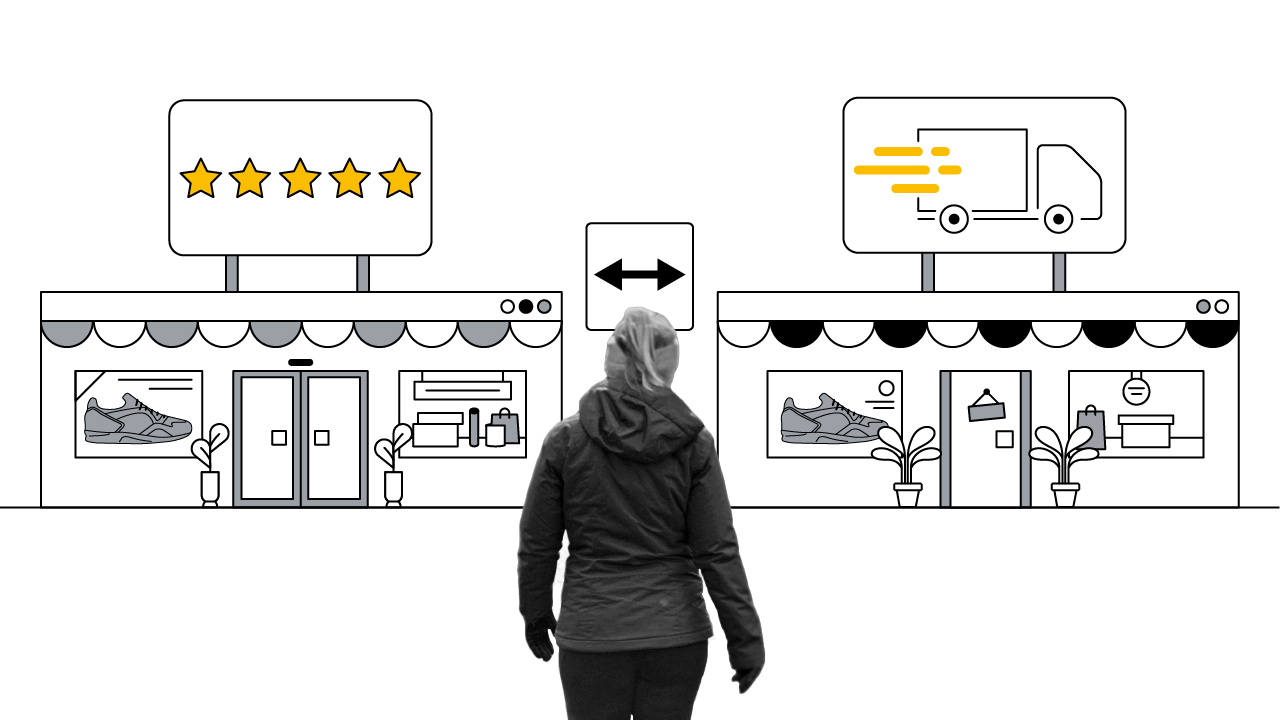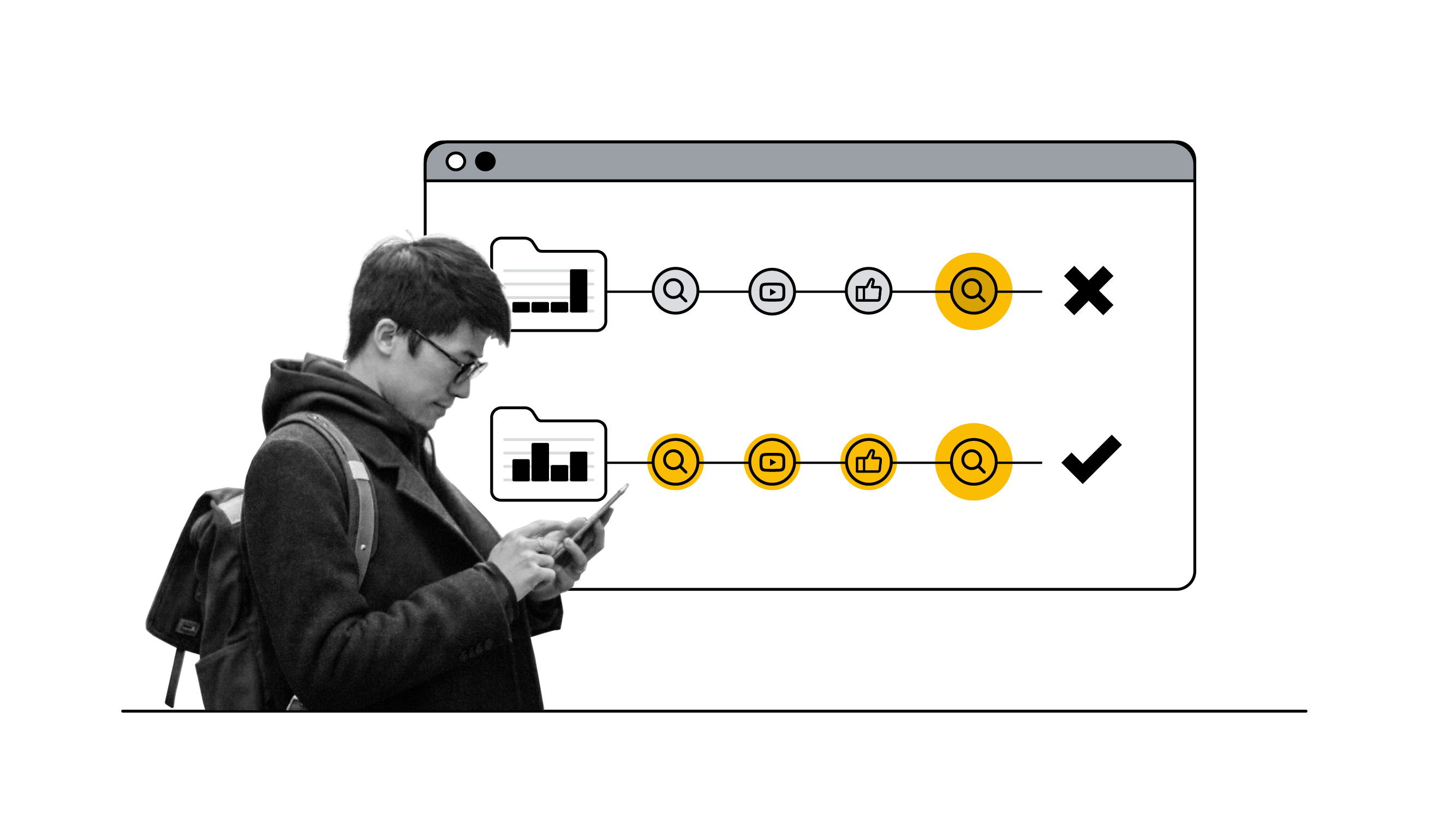The modern path to purchase is as complex as the tech savvy consumer. New data from a study carried out by Google CEE and IPSOS reveals just how complex things can get and the steps brands can take to make inroads.
Today’s customer journey is so complex that it looks more like the plot of a “whodunit” than a decision to buy a new jacket. Consumers have more choice than ever before. They research and shop across multiple devices, multiple touch points, around the clock — both online and off.
That’s great news for consumers, but the level of complexity is enough to keep marketers awake at night. Complex and a tad intimidating? Sure, but getting it right can be the difference between your brand and the competition.
The concept of a “customer journey” has been with us for well over 100 years but it’s really within the last 5-10 years with the birth of the smartphone that the level of complexity has exploded.
The research carried out by Google CEE and IPSOS surveyed 4,200 consumers across four categories of products and services — a laptop, a TV, a mobile phone contract, and clothes and footwear. The study was focused on 16+ year old Internet users in Poland, the Ukraine, Greece and the Czech Republic who had recently purchased one of the products or services.
Bridging offline and online thinking
Offline and online activity adds to the already complex picture. Modern consumers move seamlessly between the physical and digital worlds so even if they do end up making in-store purchases, the chances are that they’ve done some prior online research.
On average, only 11% of consumers can be treated as strictly “online customers” and 12% can be earmarked as strictly “offline consumers”, which is driven by the clothes and footwear category — for consumer electronics, strictly offline purchases is significantly lower. Compare these to the overwhelming number of consumers — for most products it’s over 80% — who opt to research online and purchase offline or research offline and purchase online.
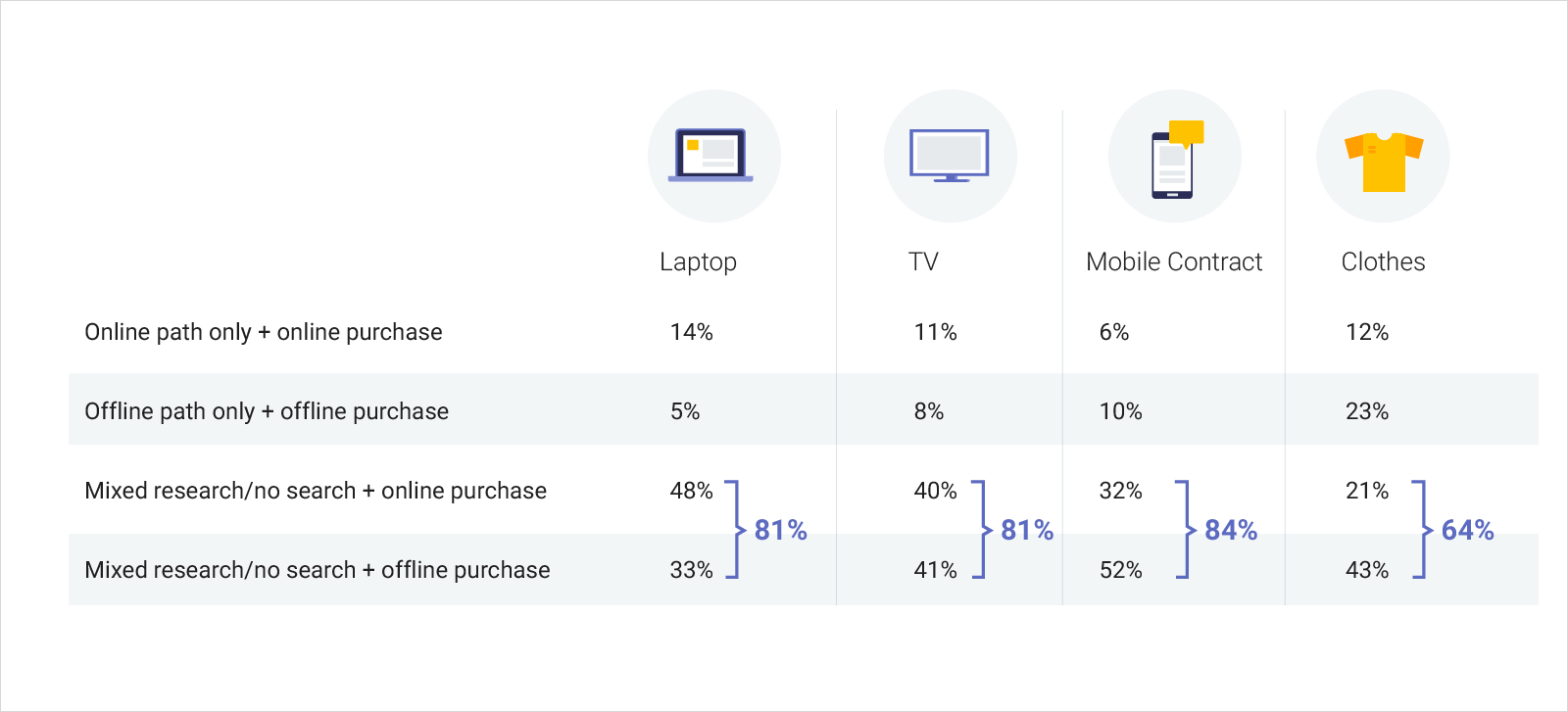
The lesson to be learned here is that marketers need to take a more holistic approach to the customer journey. They can no longer separate the digital and brick-n-mortar worlds. In practical terms this means improving communication and metrics when it comes to offline sales on the ground and digital campaigns.
Joining the dots
Despite the complexity, the modern customer journey can be broken down into moments that reveal the how, why and where people are making purchase decisions. The research revealed that the average range of touchpoints for all four products and services was 2.8, with laptops and TV sets having a much wider range.
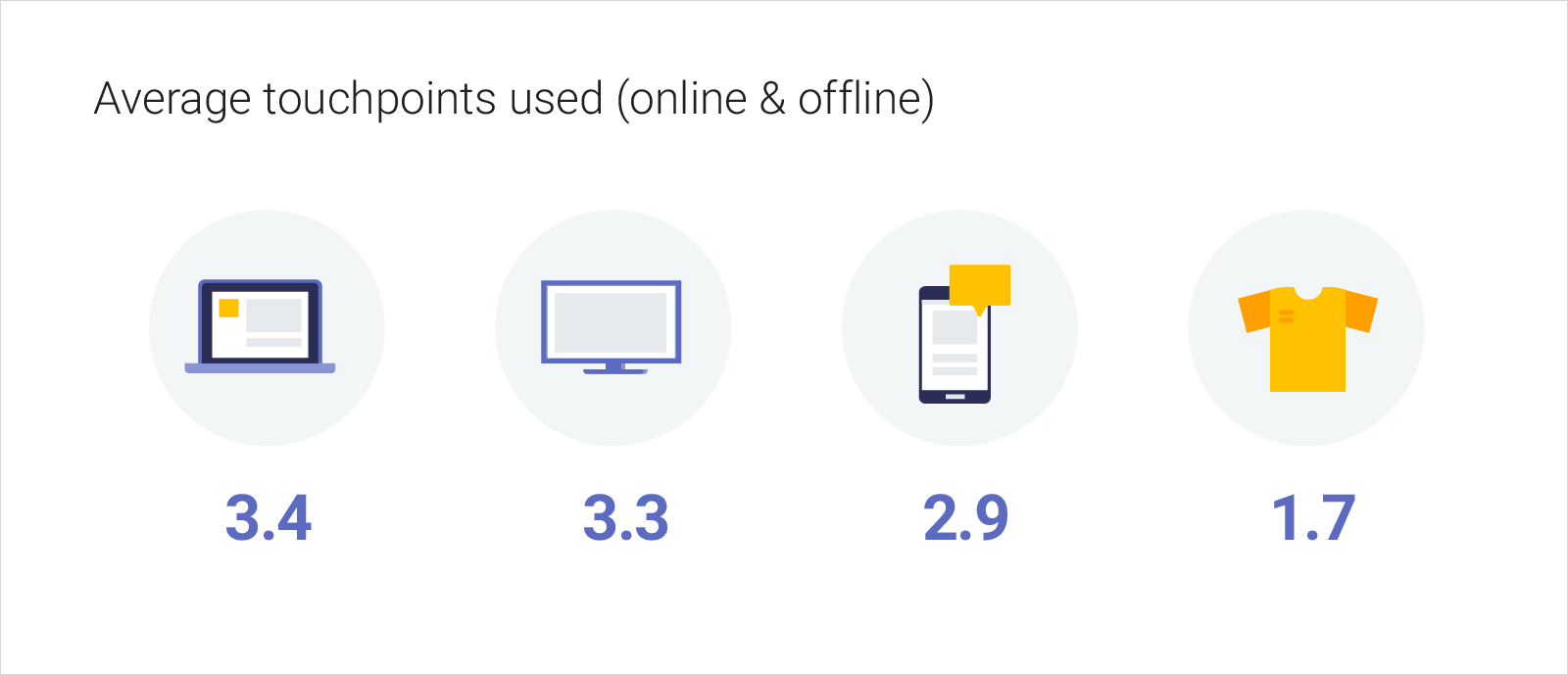
This makes sense when you look at average costs and how people tend to make decisions when it comes to different types of purchases. Consumers are more inclined to spend more time researching high-end purchases like laptops and TV sets and so more touchpoints are generated.
(Almost) everything starts with a search
Search has become second nature to consumers. People use search in those “I want to know”, “I want to do”, and “I want to buy” moments. For almost all of the products and services surveyed, Search came out on top as the first touchpoint for consumers.
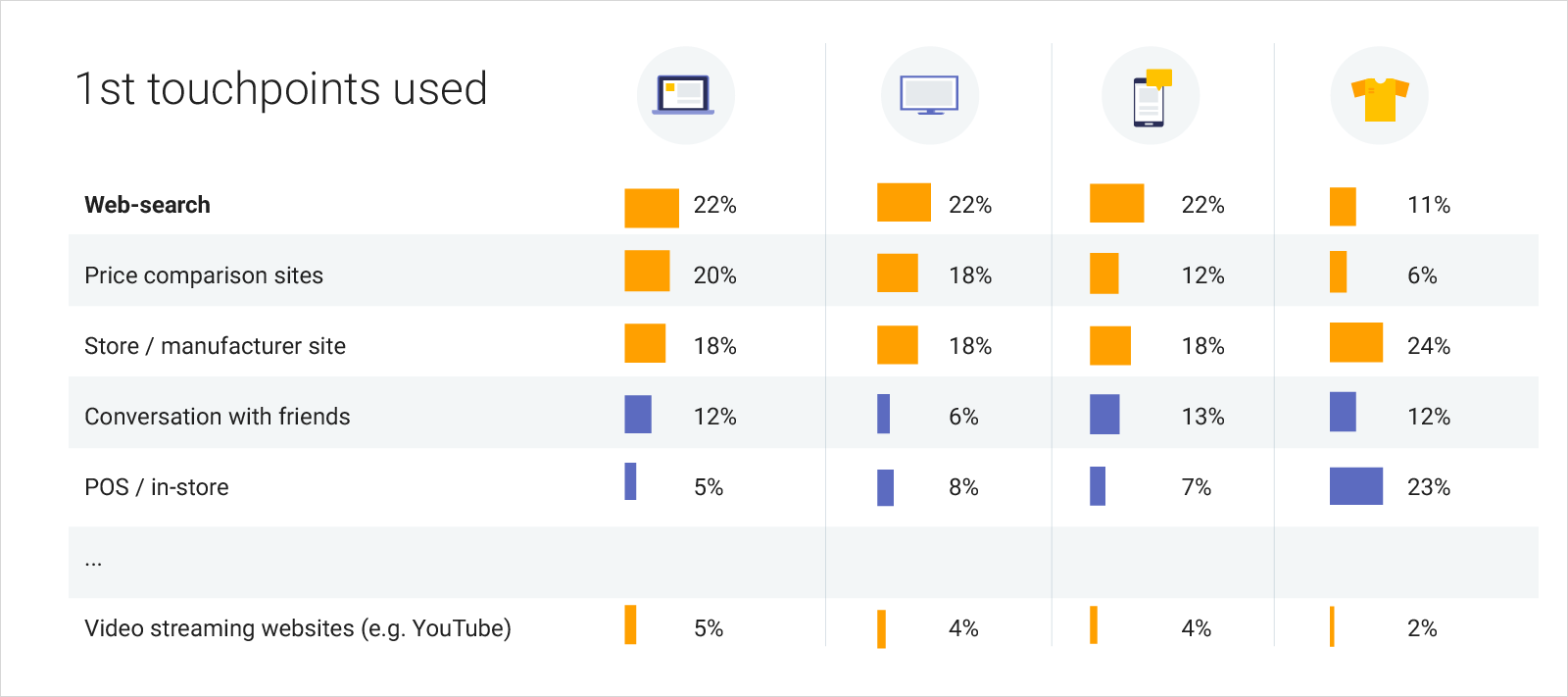
Most touchpoints are self explanatory, consumers go to price comparison sites for the best deals or ask friends for advice before making a purchase. But the study showed that consumers use Search, Youtube and in-store research for a variety of reasons.
Depending on the touchpoint, the reasons range from the simple to the most complex and multi-purpose. Search is particularly complex. People are searching for inspiration, reviews, product attributes and prices before taking action.
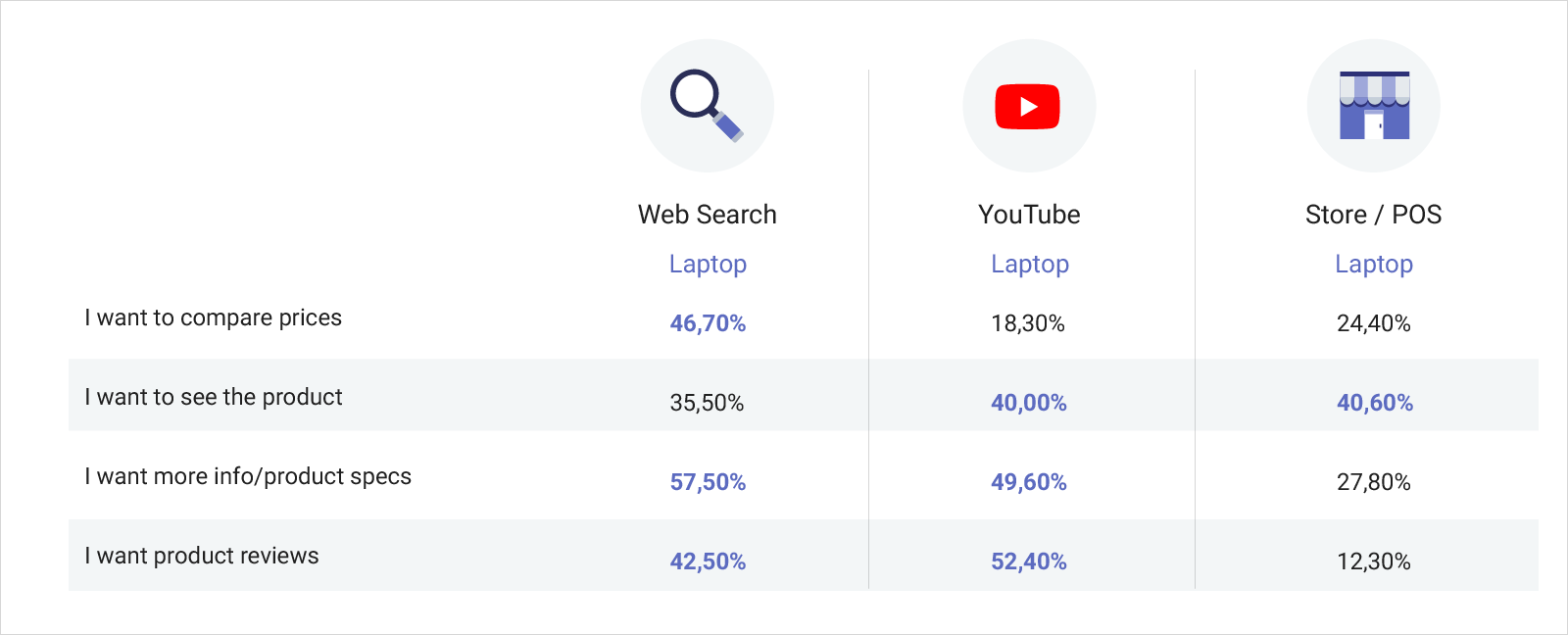
The lesson for marketers? Be where it matters most, and be helpful. As the saying goes, content is king but context is queen. Consumers demand and expect useful information as they progress along their purchase path. The brands that can provide relevant content at key touchpoints are the ones that will win consumer trust and come out on top.
The pathway to purchase in a mobile-first world
Today’s consumers are mobile-first. Mobile behaviour adds to the challenge of mapping out purchase pathways but it also yields valuable opportunities for brands to connect with consumers across more touchpoints.
On mobile, touchpoints don’t compete for consumers’ attention, they complement them. People consume more media on mobile which means product reviews on YouTube can complement the in-store experience.
Mobile is the missing link between inspiration and action when consumers move from online to offline purchases. For tech products, over 50% of consumers surveyed used their mobile phones to research while physically browsing in-store.

The lesson here? Think cross-device and provide consistent messaging both online and off. Think hyper-local targeting with push notifications that provide discounts and coupons to mobile users while in-store to seal the deal.
Provide value-added mobile experiences to consumers that help them find what they are looking for, seamlessly and quickly. Use tools like TestMySite to see how your mobile experience measures up.
What’s brand got to do with it?
Empathy goes a long way in advertising. Understanding consumers’ states of mind and motives during the moments of inspiration and action can be key when it comes to conversions.
Of the four types of products and services surveyed, respondents could be categorised into three brand loyalty groups—consumers shopping with a range of brands in mind, consumers shopping for a specific brand, and consumers with no brand loyalty.
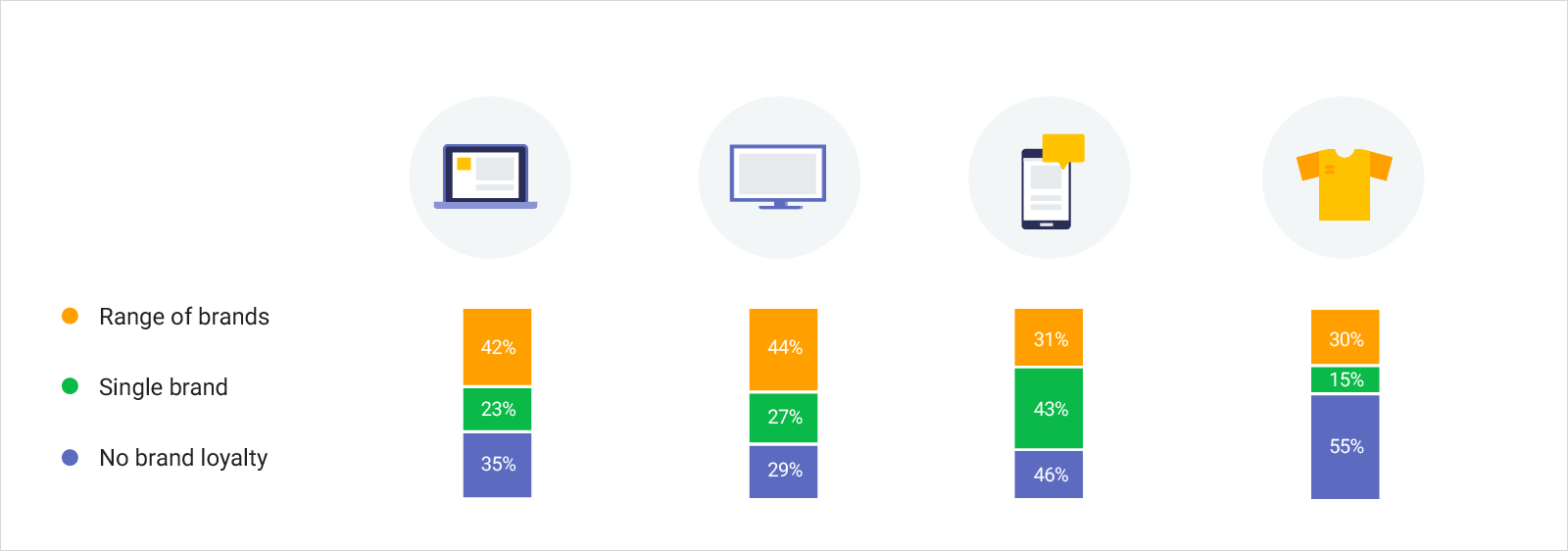
Consumers with a range of brands in mind are more likely to take a longer time researching and can spend over a week before making a final decision. Consumers with no brand loyalty and consumers with a single brand in mind are more likely to act faster and take a decision while they are in-store.

The lesson here is that the strategy deployed depends largely on your customers’ brand loyalty. Loyal customers should be guided seamlessly to their product. Similarly, consumers with no brand loyalty want a seamless experience but are less likely to spend as much as loyal consumers.
Consumers with a range of brands in mind want more information before making a decision and marketers need to provide them with the relevant content and messaging at key silos.
Key takeaways: Making inroads on the purchase path
The study revealed just how complex the path to purchase can be, but it also provided patterns and mapped out the how and why of consumer behaviour.
- Offline and online are not separate worlds. Consumers expect to travel between them seamlessly. Brands need to meet these expectations by taking a more holistic approach to marketing.
- Touchpoints can be segmented depending on industry and product or service. Brands should provide relevant information at each touchpoint.
- We live in a mobile-first world. Brands should use mobile to optimise pathways to purchase by aligning cross-device messaging and improving their mobile experience.
- Brand loyalty has an impact on how consumers research and make decisions. Understanding consumer intent can help marketers improve experiences and conversion rates.


